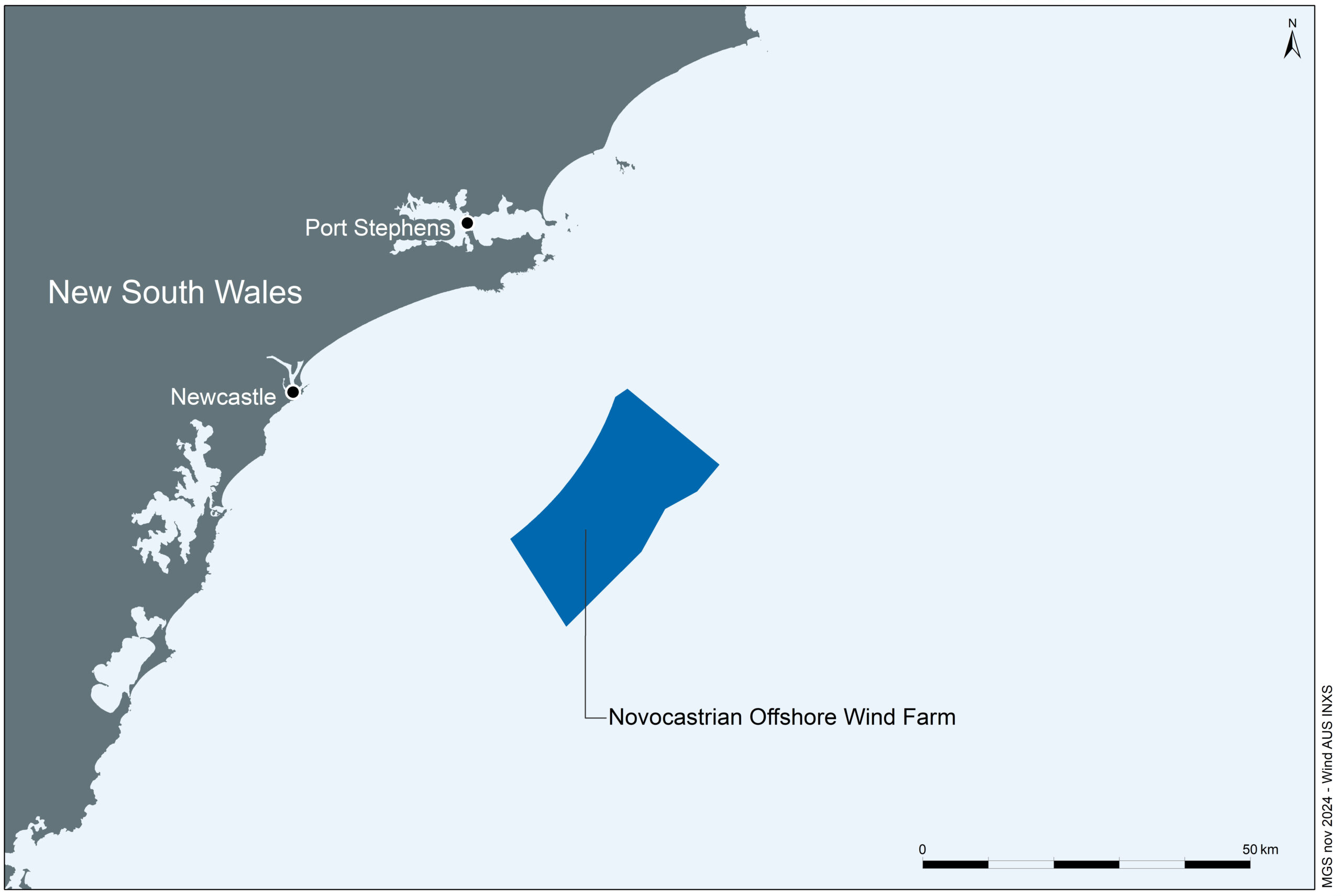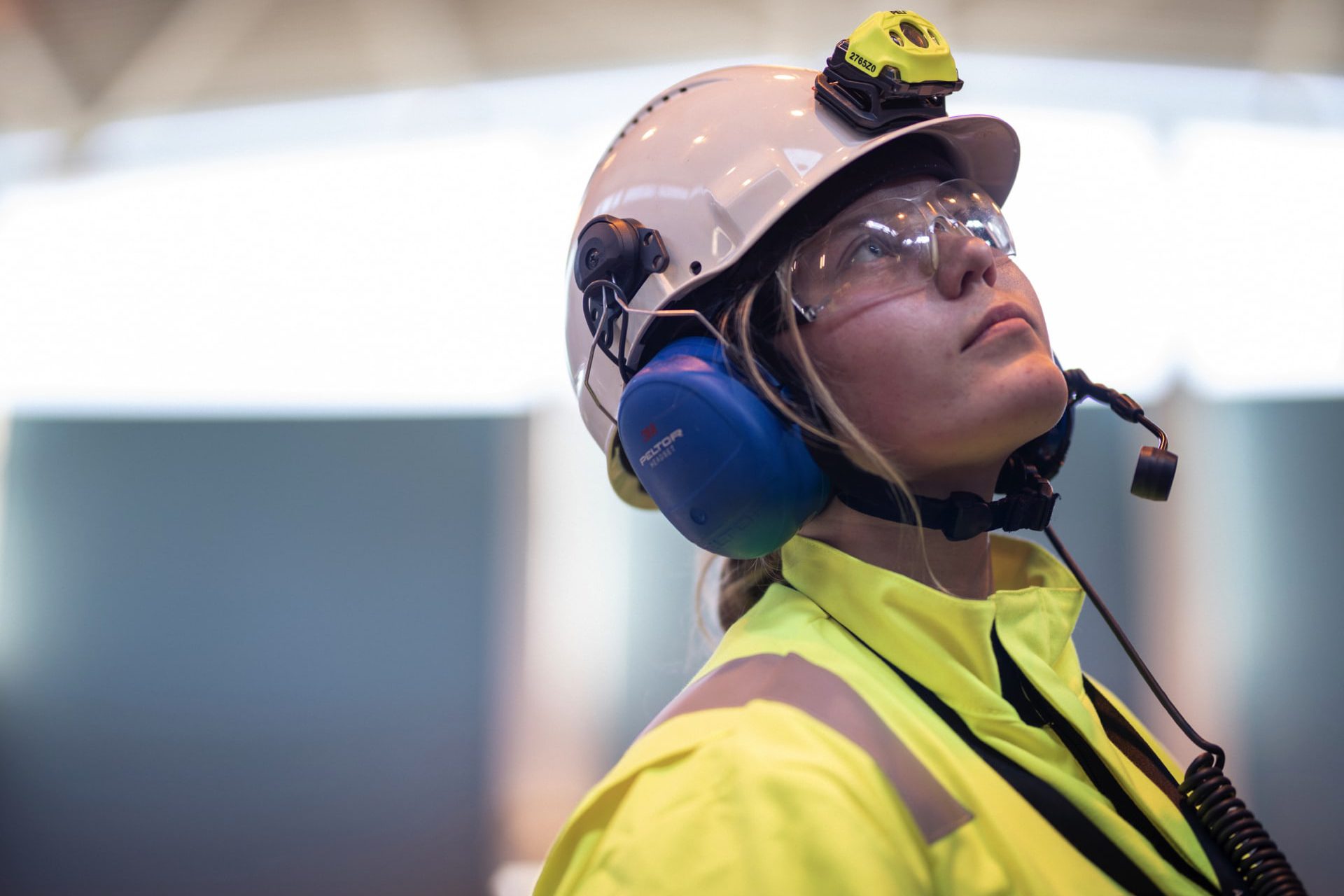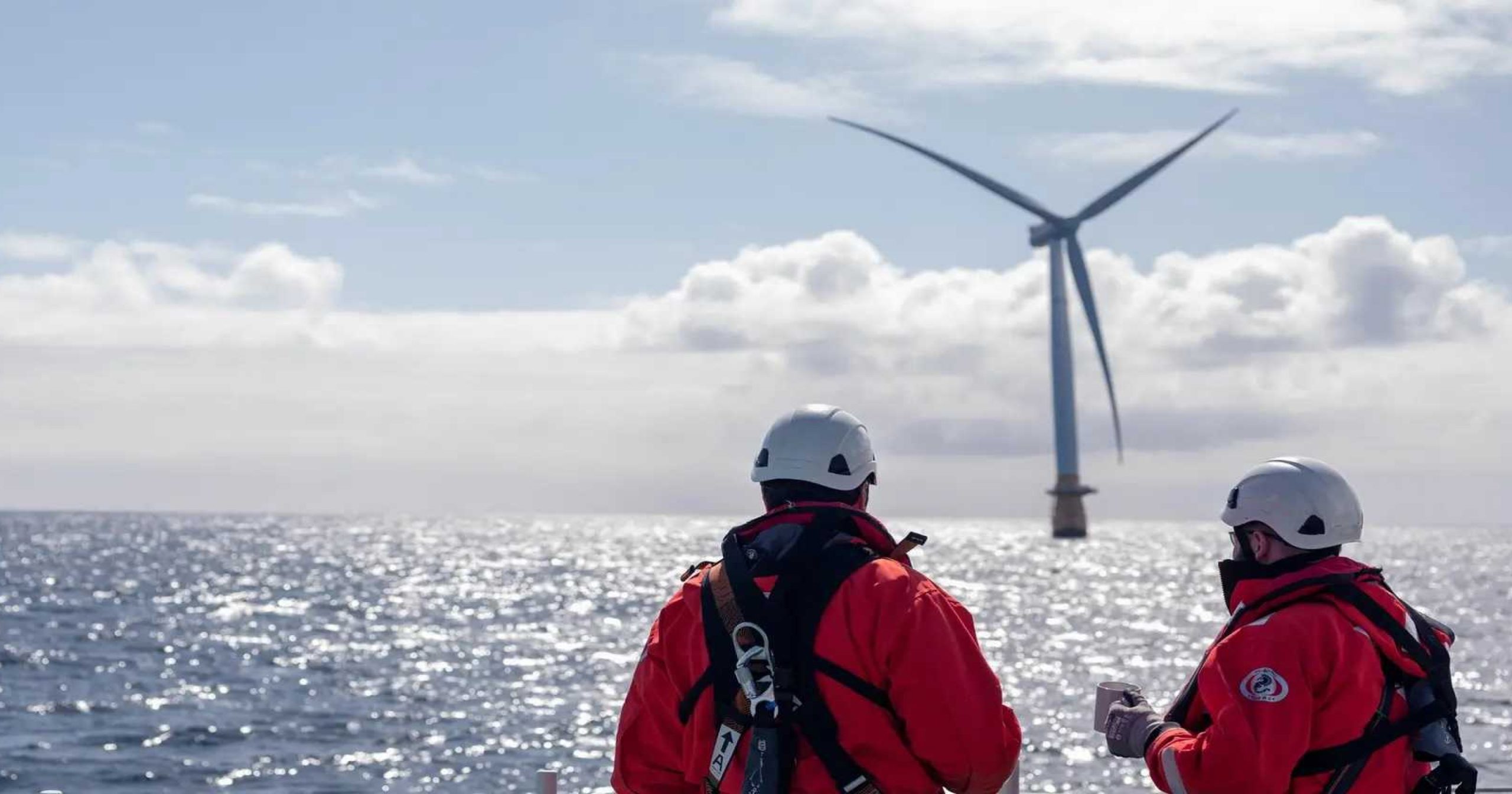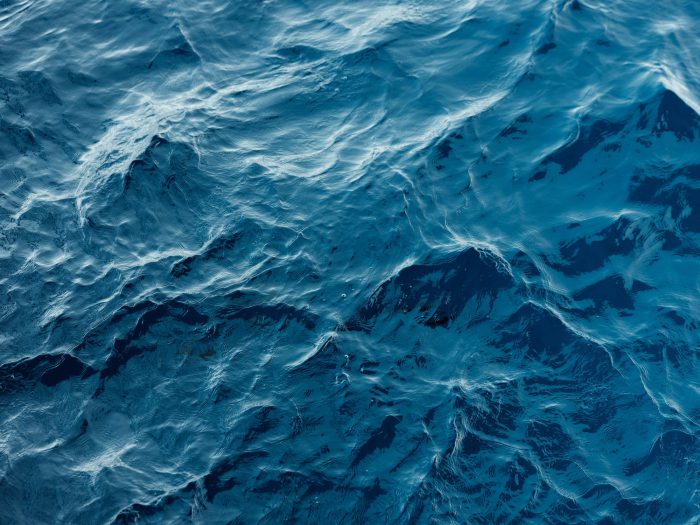Project Overview
The Hunter Region has great conditions for offshore wind; it has suitable waters, strong winds and nearby port facilities to support construction activities. Newcastle is also close to existing high voltage grid infrastructure and has a strong local skillset and industrial legacy.
How does it work?
Energy is captured when the force of the wind at sea turns the floating offshore wind turbine blades. This energy produces electricity, and travels along inter array cables connected to offshore substations. Electricity is then condensed and travels through export cables to an onshore substation which is connected to the existing grid by high voltage cables.
What could it look like
Explore visualisations of the wind farm from different locations along the Hunter coast:
Please refer to photography locations for more information about the images.
Design Elements
As part of our feasibility licence application we provided a preliminary design. The proposed design elements are indicative and subject to thorough environmental and technical studies, engineering considerations and input from key stakeholders.
500km2
Novocastrian Wind Feasibility Licence area
22 to 52 kilometres
Distance to shore approximately
Up to 2.01 gigawatts
Total installed capacity
An essential element of planning a project of this scale is to work with key specialists and consult with stakeholders to understand how people are currently using the area, how the project may interact with their needs and establish opportunities to share the space.
Novocastrian Offshore Wind believes in coexistence and that it is possible for all groups to share ocean resources. By considering existing uses of the area, we search for the best possible solutions to minimise potential impacts.
Hunter Offshore Wind Area

Maps of offshore wind zone locations can be downloaded from the Australian Marine Spatial Information System (AMSIS) website.
Project Timeline
- Australian Government declared the Hunter zone in NSW, suitable for offshore wind and opened for applications from proponents.
- Awaiting final feasibility licence award
Novocastrian Offshore Wind Farm received a provisional feasibility licence for a 500km2 area offshore from the Hunter coast, NSW in June 2024. - Design and approvals | up to 7 years
The design of the offshore wind farm, transmission route and onshore grid connection will be informed by environmental and technical studies, engineering requirements and stakeholder input. Environmental approvals and evidence of a commercially viable project are required before making a final investment decision and applying for a commercial licence under the OEI Act. - Construction and commission | up to 4 years
Once a commercial licence is awarded, the project will take approximately four years to construct and commission before power begins to be generated and introduced to the grid. - Operations and maintenance | +30 years
The project will generate power for over thirty years, with a local operational and maintenance base for technical support. - Decommissioning | up to 2 years
The offshore wind farm will be designed to enable decommissioning and restoration of the environment at the end of its life, in accordance with approval conditions.
Next Steps
Once we receive the final feasibility licence award, our focus over the next few years will be:
- Engage with key stakeholders with a specific focus on First Nations people, existing marine users and local communities.
- Commence baseline environmental surveys and studies.
- Progress high level design to inform the project scope and design envelope.
- Progress environmental and planning approvals for the project, including feasibility activities.
Partnerships and Collaboration
Stronger together.
We know from experience that the success of a project of this size and complexity requires the engagement of a wide range of local, regional and international experts and partners. That’s why we will continue to collaborate with a broad range of sectors such as business, education and research, environment and community.
As a proactive member of Australia’s renewable energy industry, we actively share our global knowledge and experience, advocate best practices and collaborate on shared initiatives to progress the offshore wind industry in Australia.
We are excited to continue to deepen collaboration and partnerships building on 15 memorandums of understanding (MOUs) with organisations based in the Hunter region, NSW and across Australia.

Benefits
Novocastrian Offshore Wind Farm will aim to support NSW’s critical energy industry by producing reliable sustainable energy from floating offshore wind for both industry and homes.
The offshore wind industry has the potential to create significant new economic value by supporting the development of low carbon products and services and encouraging new or enhanced skill sets and businesses to the Hunter region.
Offshore wind also offers the potential for significant investment and development of the supply chain, renewable electricity at scale, and local jobs during the development, construction, operations and maintenance phases of the project.
Why offshore wind for the Hunter
Use of existing infrastructure
The Novocastrian Offshore Wind Farm is in close proximity to the existing grid infrastructure, reducing the need for large investment in new onshore electricity infrastructure.
Large scale source of energy
Offshore wind can play a critical role in meeting forecasted energy needs by providing a new, large-scale source of low carbon energy. Given its complementary generation pattern to onshore renewables and availability at peak times, offshore wind can help decarbonise regions with high population and industrial energy needs, increasing reliability of supply.
Strong offshore wind resources
NSW has strong offshore wind resources. Winds offshore from NSW are also typically strong and more reliable than onshore winds, often reaching capacity at times that correspond with peak energy demand, ensuring electricity can be generated when it is needed most.
Utilising existing talent in the Hunter region
The project has the potential to create hundreds of jobs and substantial investment in the Hunter region and its people. While offshore wind is new to Australia, the Hunter is well-positioned for success with experienced businesses and strong educational institutions like the University of Newcastle and TAFE NSW, ready to support the transition to renewable energy. We have mapped out training and jobs required for all stages of the project, recognising the transferable skills from the existing mining, power generation, and manufacturing industries. We are committed to collaborating with government and educational providers to develop the skilled workforce required to support the offshore wind industry in Australia and to provide existing workforce and the next generation with exciting new training and career pathways.
Economic and social opportunities
Our aim for Novocastrian Offshore Wind Farm is to harness and produce renewable energy so we can share economic and social benefits including employment and business opportunities.
To achieve these goals or ambitions, we will need to work through a number of major planning milestones, detailed in the project timeline.
We are excited to work with local organisations to define, design and measure a range of benefits to support the Hunter region.




